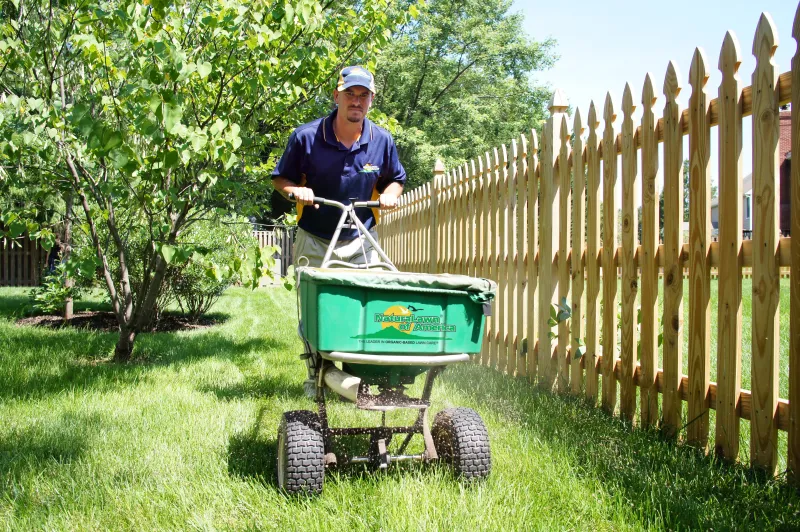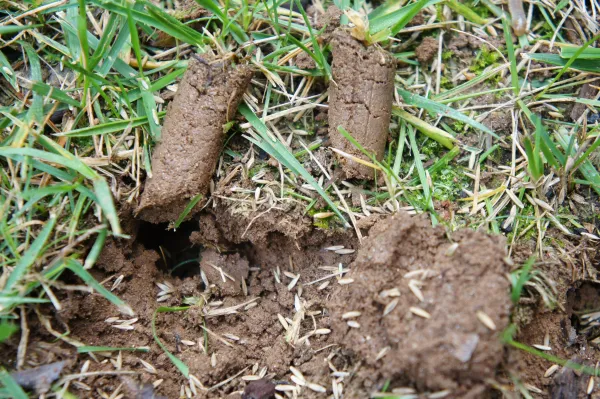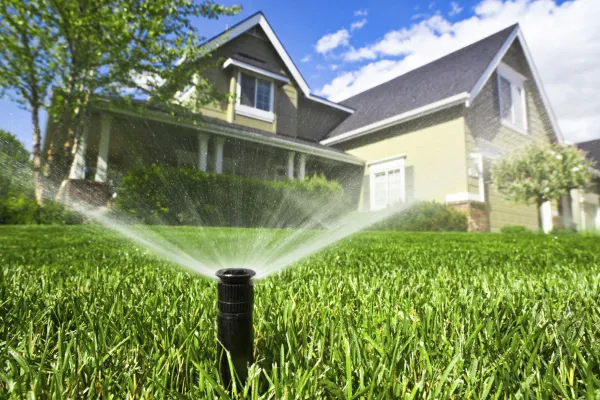Many lawns suffer some type of damage during any given year. Thankfully, through the process of aerating soil and putting down high quality grass seed, much damage can be corrected.
So why then, are results less than desirable even when new grass seed is put down at the right time of year? Simply put, it’s often because of the lack of ongoing care to your new seeded lawn after the seed has spread.

Maintain Moisture in Your Seeded Grass
One of the most critical factors for keeping new turfgrass seedlings alive is making sure they maintain adequate moisture until the grass is well established. Without moisture, grass germination and early seedling survival will be reduced or completely lost.
To avoid frustration, and of course losing money, the newly seeded lawn's soil surface should be kept moist from the time of seeding until several weeks after the seed has germinated. Think of the seed as a tiny sponge. Watering lightly several times per day may be needed to maintain the moisture required for germination and survival. Don’t rely on rainfall alone; oftentimes, it’s not enough. Once the seed gets wet, it needs to stay wet.
Your new seeded lawn may need special attention to help new grass take root and thrive. One of those essentials is regular watering. Doing so is important during the first two months of growth, as new grass will be exceptionally thirsty in order to develop a firm and lush root system. With regular watering, you can be sure that your new seeded lawn weathers through any turbulent conditions and keeps driving your outdoor oasis visions right up to completion.
Watering lightly several times per day may be needed to maintain the moisture required for germination and survival. Don’t rely on rainfall alone; oftentimes, it’s not enough. Once the seed gets wet, it needs to stay wet.

Avoid Overwatering Your New Seeded Lawn
On the other hand, too much water, whether from rainfall or irrigation, can also lead to problems. But how much is too much for new seeded grass? Water shouldn’t reach the point where it pools or runs off site. This can cause young grass to suffocate, wash away completely or may lead to disease. Lawns with clay or compacted soil are more susceptible to these issues, so keep an eye on the soil’s condition.
Once seedlings and their root systems develop, frequent watering should be replaced by less frequent, yet longer watering of the seeded area. This will allow the surface area to dry out but keep the root area moist.

A Fertilized Lawn Is a Healthy Lawn
Maintaining a new seeded lawn can be a challenging task, especially when it comes to keeping up with fertilizer applications. To ensure your new seeded lawn has the proper nutrients for optimal growth, an organic fertilizer should be applied every four weeks.
It's important to remember to stick to an organic fertilizer, as chemicals may disrupt the delicate new root systems of newly-planted grass seed. With regular fertilizer applications, your new lawn will soon flourish with plenty of lush greenery.
Continue to Monitor Your Newly Seeded Grass
As the grass continues to develop and mowing is required, the need for irrigation continues to decrease. The soil at this point should be firm enough to allow the use of a mower without having it sink into the turf. If the soil is too wet when new turfgrass is first mowed, new seedlings may get damaged.
Following these tips will provide your newly seeded lawn the moisture it needs to germinate and the ability for it to develop into a healthy lawn. For additional lawn care tips or questions on how to care for a newly seeded lawn, please contact your local NaturaLawn of America office.







